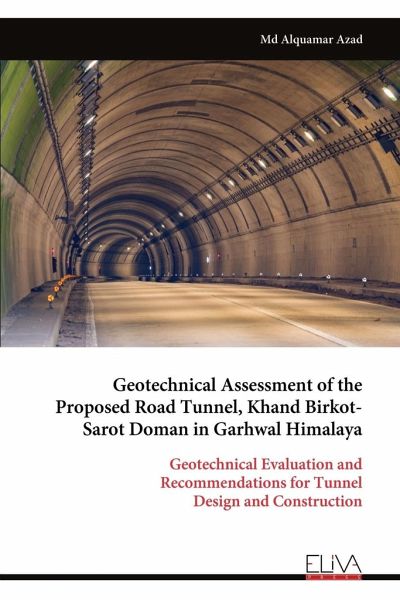
Geotechnical Assessment of the Proposed Road Tunnel, Khand Birkot- Sarot Doman in Garhwal Himalaya
Versandkostenfrei!
Versandfertig in 1-2 Wochen
37,99 €
inkl. MwSt.

PAYBACK Punkte
19 °P sammeln!
The use of tunnels in transportation schemes has increased significantly in the last decade, particularly in mountainous regions. Underground space development is a viable long-term option, offering reduced environmental impacts. Tunneling has become popular in mountainous areas due to reduced travel time and costs. The Himalayan region has vast potential for underground constructions in transport systems and hydropower. However, tunneling through the tectonically disturbed lower Himalayan Region poses significant challenges. This study aimed to provide comprehensive data on rock mass classifi...
The use of tunnels in transportation schemes has increased significantly in the last decade, particularly in mountainous regions. Underground space development is a viable long-term option, offering reduced environmental impacts. Tunneling has become popular in mountainous areas due to reduced travel time and costs. The Himalayan region has vast potential for underground constructions in transport systems and hydropower. However, tunneling through the tectonically disturbed lower Himalayan Region poses significant challenges. This study aimed to provide comprehensive data on rock mass classification systems for future excavation and support design studies. Geological and geotechnical properties were investigated along NH-94, and a tunnel route was designed. Fieldwork and laboratory tests were conducted at 16 locations, and RMR values were calculated. The study concluded that the rock masses were classified as fair to poor, with fair rock covering over 3.5 km of the total tunnel length. The RMR values ranged from 52 to 57 for quartzite, 55 to 43 for phyllite, and 43 to 41 for slate. The poor rock quality sections were identified, and the shield method was recommended for those areas. Drilling and blasting methods can be used for the rest of the tunnel excavation.


